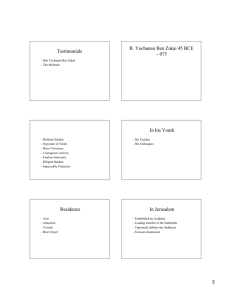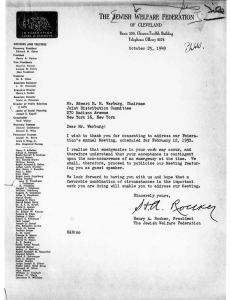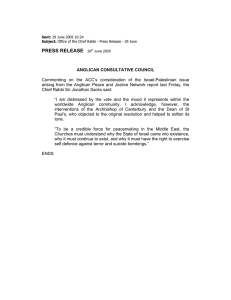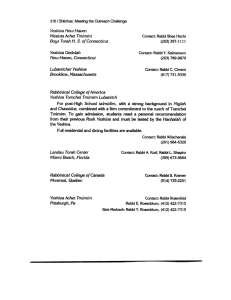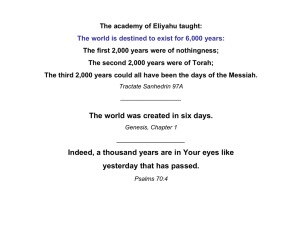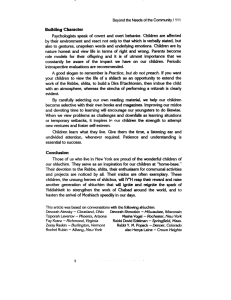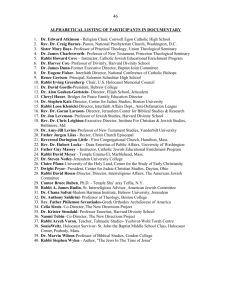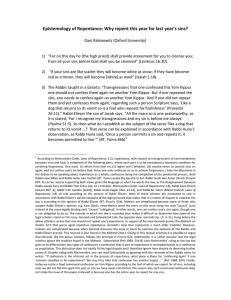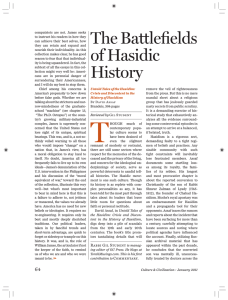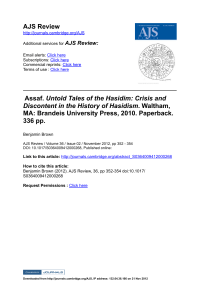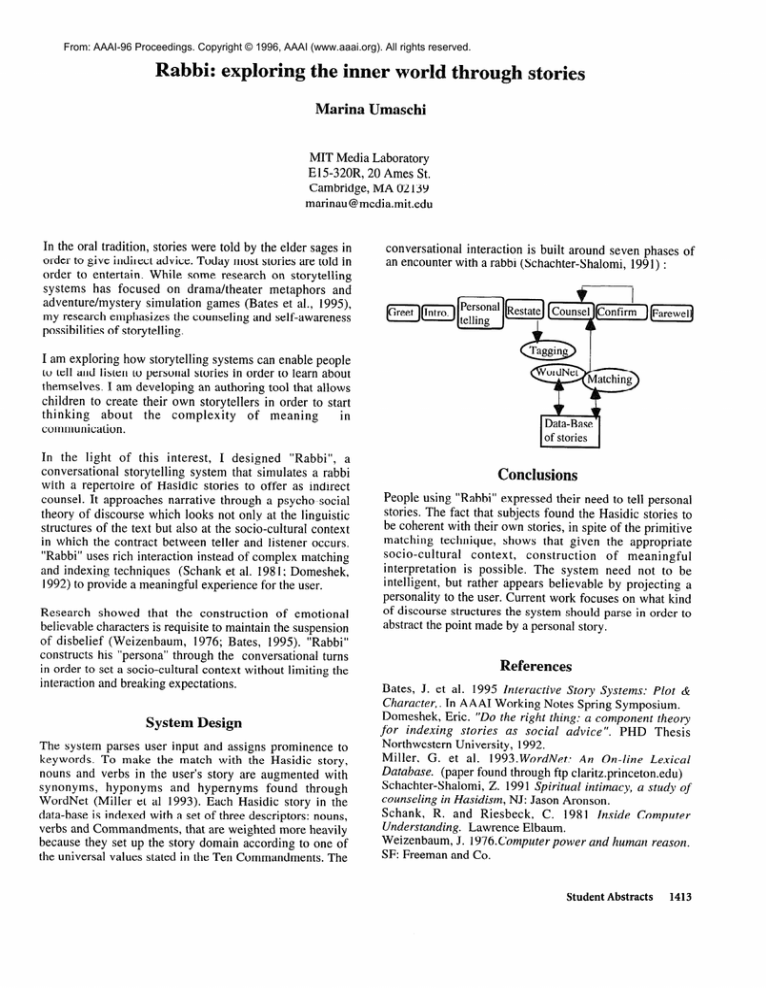
From: AAAI-96 Proceedings. Copyright © 1996, AAAI (www.aaai.org). All rights reserved.
Rabbi: exploring t e inner world t
Marina Umaschi
MIT Media Laboratory
E15-320R, 20 Ames St.
Cambridge, MA 02 139
marinau @ media.mit.edu
In the oral tradition, stories were told by the elder sages in
order to give indirect advice. Today most stories are told in
order to entertain. While some research on storytelling
systems has focused on drama/theater
metaphors
and
adventure/mystery
simulation games (Bates et al., 1995),
my research emphasizes the counseling and self-awareness
possibilities of storytelling.
conversational
interaction is built around seven phases of
an encounter with a rabbi (Schachter-Shalomi,
1991) :
I am exploring how storytelling systems can enable people
to tell and listen to personal stories in order to learn about
themselves. I am developing an authoring tool that allows
children to create their own storytellers in order to start
thinking
about
the complexity
of meaning
in
communication.
In the light of this interest,
I designed
“Rabbi”, a
conversational
storytelling system that simulates a rabbi
with a repertoire of Hasidic stories to offer as indirect
counsel. It approaches narrative through a psycho-social
theory of discourse which looks not only at the linguistic
structures of the text but also at the socio-cultural context
in which the contract between teller and listener occurs.
“Rabbi” uses rich interaction instead of complex matching
and indexing techniques
(Schank et al. 198 1; Domeshek,
1992) to provide a meaningful experience for the user.
Research
showed that the construction
of emotional
believable characters is requisite to maintain the suspension
of disbelief (Weizenbaum,
1976; Bates, 1995). “Rabbi”
constructs his “persona” through the conversational
turns
in order to set a socio-cultural context without limiting the
interaction and breaking expectations.
System Design
The system parses user input and assigns prominence to
keywords. To make the match with the Hasidic story,
nouns and verbs in the user’s story are augmented with
synonyms,
hyponyms
and hypernyms
found through
WordNet (Miller et al 1993). Each Hasidic story in the
data-base is indexed with a set of three descriptors: nouns,
verbs and Commandments,
that are weighted more heavily
because they set up the story domain according to one of
the universal values stated in the Ten Commandments.
The
Conclusions
People using “Rabbi” expressed their need to tell personal
stories. The fact that subjects found the Hasidic stories to
be coherent with their own stories, in spite of the primitive
matching technique,
shows that given the appropriate
socio-cultural
context,
construction
of meaningful
interpretation
is possible. The system need not to be
intelligent, but rather appears believable by projecting a
personality to the user. Current work focuses on what kind
of discourse structures the system should parse in order to
abstract the point made by a personal story.
eferences
Bates, J. et al. 1995 Interactive Story Systems: Plot &
Character,. In AAAI Working Notes Spring Symposium.
Domeshek, Eric. “Do the right thing: a component theory
for indexing stories as social advice”. PHD Thesis
Northwestern University, 1992.
Miller, 6. et al. 1993.WordNet:
An On-line Lexical
Database. (paper found through ftp claritz.princeton.edu)
Schachter-Shalomi,
2. 1991 Spiritual intimacy, a study of
counseling in Hasidism, NJ: Jason Aronson.
Schank, R. and Riesbeck,
C. 1981 Inside Computer
Understanding. Lawrence Elbaum.
Weizenbaum, J. 1976.Computer power and human reason.
SF: Freeman and Co.
Student Abstracts
1413

